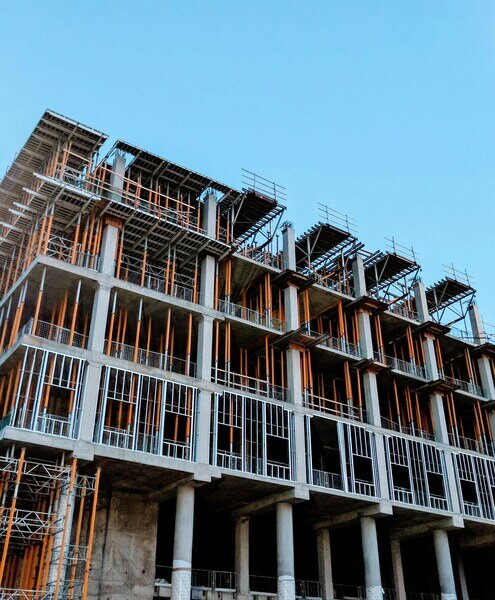Ten Ways to Unfreeze the Housing Market and Create Inventory in 2024
Tuesday, January 23, 2024
2023 had the fewest number of existing home sales in the last thirty years. Mortgage interest rates remain stubbornly high, which cascades into a market “lock in effect” that sharply reduces housing inventory. To fulfill demand, new construction is increasing in many states. However, due to zoning restrictions and a lack of land, only limited new construction will occur in eastern Massachusetts. The lack of inventory and limited number of new housing permits have conspired to cause a housing crisis in MA. Any and all ideas to create inventory should be considered. Here are ten ways to move the market in 2024:
- Reduce the Spread Between the Prime Rate and the 30 Year Mortgage Rate. The spread between the 10 year bond and the 30 year mortgage can be decreased to lower the mortgage rates right now. Currently, the large spread is driving up mortgage rates. In the first week of December for example, the 10-year yield closed below 4.25% and mortgage rates were at 7.09%. When mortgage rates were low, the spread between the 10 year bond and 30 year mortgage rate was 1% to 1.5%. The Fed can return to buying mortgage-backed securities (termed Quantitative Easing or “QE”) to return the spread to historical levels to jumpstart the housing market. That would have the immediate effect of bringing rates into the fives, and when the expected rate drops occur later this year, which would drop rates into the fours.

Critics of this plan will argue that QE will cause inflation, so the Fed will be reluctant to resume the program. In fact, when rates are high, the market is frozen which results in scarce inventory and fewer home sales. This drives rents up, which is one of the key measuring sticks of core inflation. Creating more inventory will break this cycle and reduce inflation.
- Reinstate the Obama era First-Time Buyer tax credit program. In 2008, the Obama Administration offered an $8,000 tax credit for first-time Buyers. The program was an enormous success and spurred homeownership, especially for the middle class. It was claimed by a nearly 1.5 million households. There is a similar bill pending in Congress, dubbed the “First-Time HomeBuyer Act” that would provide a refundable tax credit of $15,000 for first-time buyers. Critics argue that it adds to the deficit. However, the funds from the credit fuel the “Main Street” economy by creating a flow of activity at Home Depot, Lowes, furniture stores, hardware stores. Home sales also have further downstream effect by generating more work for electricians, plumbers, carpenters, etc. . . .
- Zoning Improvements Under the MA Communities Act Will Allow For Several Thousand New Housing Units. Under the MA MBTA Communities Act, 12 Boston area communities with rapid transit access were required to update their zoning codes to allow for more mutlit-family development. All communities have updated their zoning codes in compliance with the law (except for Milton). Brookline recently voted to allow the creation of 1,500 new housing units around Coolidge Corner. Newton voted to allow up to 8,745 new units in Newton Centre and several other villages with T or MBTA access. Arlington and Lexington voted in many more units than required under the law. It likely will take 2 to 3 years for new properties to be built, but the permitting infrastructure is in place. Further, an additional 130 Eastern MA communities are required to submit updated zoning plans by the end of 2024.
- Congressional Legislative Fixes:

Congress can take immediate steps to pass, remedy or leave in tact legislation to spur more real estate activity, including:
- Increasing the amount of the capital gains exemption for sales of residential real estate above the current $250k/$500k level which was last updated in 1997.
- Keeping the 1031 exchanges in place. There has been a drumbeat of calls to abolish the 1031 real estate exchange. With inventory at decades low levels, now is not the time to change a tax law that would cause a further decreases in inventory.
- Increase the State and Local Tax (“SALT”) deduction above $10,000. With prices increasing and rates high, new Buyers need relief on their local property taxes.
- Allow For More ADU’s. CA recently allowed for accessory dwelling units which has caused the permitting of 80,000 units. MA has legislation pending that would allow ADU’s up to 900 feet by right. ADU’s can increase the value of homes and allow for sellers to trade down if needed, freeing up inventory. In CA, a number of private companies are building modular ADU’s that can be dropped into a backyard at a cost of $150,000-$300,000 per unit, to create the additional housing. More ADU’s creates will create a pressure valve to free up more inventory. Seniors could downsize, divorcing couples could have options for a spouse on the move, those in their 20’s could enter the housing market earlier than planned.
- More Assumable Mortgages. Another option to combat the lock-in effect is allow more assumable mortgages. If a lender agrees, then an assumable loan will transfer to the Buyer when a home is sold. For the Buyer, rather than having to take out a 6.5%+ loan, the Seller’s 2.5%- 3% loan would be transferable. In addition to adding value to an existing home, more assumable mortgages would create much needed inventory to jumpstart the housing market.

While most commercial mortgages are assumable, only a sliver of residential mortgages are eligible. VA loans and FHA loans are assumable if the lender signs off. The government makes available all FHA loans written in the last several years, on a monthly
basis. https://www.hud.gov/program_offices/housing/rmra/oe/rpts/sfsnap/sfsnap The Excel spreadsheets in the database list the loan's city, state, county, lender, loan type, loan amount and interest rate. As an example, the December, 2021 database contains over 65,000 loans, including 1,059 loans written in MA. The interest rates are typically in the 2.5% - 3.5% range.
Assumable loans are not a silver bullet however. Most lenders are not incentivized to allow assumable loans. Their back offices have to do extra work for which they are not compensated. According to the Wall Street Journal, the FHA has processed just 3,349 assumable loans for the fiscal year ending September 30, 2023. Another drawback is that if the homeowner has paid down a sizable portion of the principal balance, secondary financing may be hard to obtain. Further, the service providers bundle mortgages on the secondary markets, which makes it difficult in practice to remove a mortgage from an existing servicing pool.
- Boston can convert downtown commercial office space to residential units. Local and state governments need to aggressively provide tax credits and incentives to revitalize vacant commercial space to residential use. There are a number of downtown Boston Class B and C commercial properties, for example, that are ripe for conversion to residential units. The drawback is that the conversions can be expensive if the windows and plumbing do not align with residential design and requirements. The City of Boston has considered a tax credit package to incentivize developers. Lower Manhattan converted many commercial properties to residential units beginning 20 years ago, which has created a thriving residential community and thousands of new residential units. Boston should accelerate the process now.
- MA can strengthen the Community Preservation Act to allocate more funds to housing. According to a recent Boston Globe article, more than a third of the 190 communities that have joined the CPA have failed to invest the required 10 percent of CPA funds in affordable housing. Many local municipalities are below the minimum thresholds in affordable housing. Creating more affordable housing allows for the use funds to build housing in communities for fire, police, nurses and teachers, which improves communities and allows for more inventory.
- More Seller Financing; This is an underutilized tool. Sellers that do not hold a mortgage on their property should strongly consider making mortgages available to Buyers. If a Seller can offer a mortgage 2 to 2.5 points below the market rate, then the property likely will have a stronger market. Prospective buyers can expect an adjustable rate mortgage and then can consider refinancing if rates are later lower. We had a few properties in 2023 that were Seller financed, and the transactions were a “win/win”, benefitting both the Buyer and Seller.
- Fed Lower rates! The Fed has signaled that it is open to up to three rate cuts in 2024. The Fed can change its actions based on current market conditions. Let’s hope the Fed sticks to its plans.